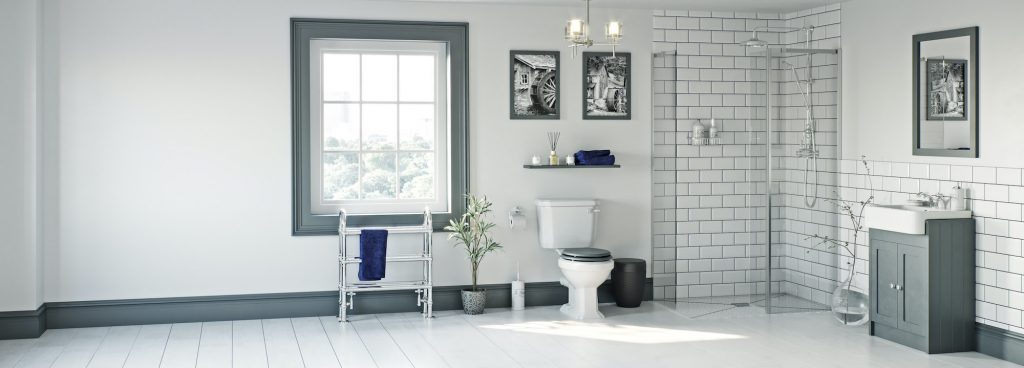
The History of the Radiator
Many of us live in homes filled with modern comforts that can easily be taken for granted. It’s easy to forget that for most of human history fundamentals such as electricity and water were not readily available to most people. That is also true of household heating systems, which have only been around for the past 100 years or so.
We couldn’t imagine a world without radiators to keep us warm, as they are a standard feature for homes in the Western world (but not for some parts of the globe). As we get on with our day we barely give them a second thought – until they stop working that is. The history of the radiator is not one many people are aware of, so in this article we are going to take you on a journey through time, heading back hundreds of thousands of years right through to the present day.
The first heating systems
Historians estimate that the first heating system created by mankind came into existence around 420,000 in Ukraine.
This was the time of the Neanderthal man, who after killing and eating the meat of a Mammoth would use the bones to create hearths sealed with a grass roof. It appears they were miles ahead of the game, as these little fire heating units could also be transported from one place to another, keeping early humans warm as they explored the surrounding terrain.
Korean innovation
During the Bronze Age – which occurred between 4000BC and 2000BC – a heating system called an Ondol was relied on by people living in Korea (long before the country was divided). Some houses would burn wood beneath a masonry floor, using the rising heat to warm the room above it, via an underground flue.
Occupants would make the most of the burning fire, using it to both heat the home and cook meals. It demonstrates that even way back then, humans wanted to make the most of the resources available to them, without wasting valuable time and energy.
Roman technology
The Romans have long been heralded as forward thinking builders for many years. Their brutal empire was responsible for millions of deaths across Europe at the time, and yet the infrastructures they invented continued to be used long after they fell from power.
The heating technology there were responsible for creating was something called the hypocaust. It was created by Sergius Orata, an hydraulic engineer who created a crude version of what we have since come to call underfloor heating.
Similar to the Ondol in Korea, the hot air produced by a burning fire beneath a liveable space would warm the room. Of course, the smoke had to dealt with, and this escaped via flues built into the walls. As with any fire, it did mean the heating source had to be constantly topped up to keep it burning strongly, which probably wasn’t the healthiest task for the people asked to carry out that labour.
Russian inventions
Travelling over to Russia we find that they were responsible for the invention of the next stage of heating systems. Russia isn’t a country known for its warm temperatures, so the need to find a way to heat building interiors was pretty important.
Of course, it was only ever going to be made available for those living at the top of society. A water-based heating system was created and installed in the Summer Palace of Peter the Great somewhere around the start of the 18th century. Using solid fuel burning boilers, the energy was then pumped into porcelain ducts to heat rooms around the palace.
American Ingenuity
Benjamin Franklin has already gone down in history for being one of the founding fathers of the USA, however, he wasn’t content with just having that on his CV. Franklin was also responsible for creating a rather smart piece of technology that pushed forward the concept of home heating even further.
In 1741 Franklin made a metal-lined fireplace. The crucial part of the invention was something called a hollow ‘baffle’. This relied on a flue that worked as a siphon and an integrated metal panel to direct the fumes generated by the fire.
It has since come to light that a similar system was invented in Germany almost 100 years earlier – although Franklin’s version was an upgrade of sorts as it made better use of the fuel thanks to the extended path travelled by the fire fumes. As a result, the fumes took a while longer to escape, which increased the intensity of the heat being generated in the room.

Here come the Brits
As we came towards the end of the 1700s, the British were able to offer their first major contribution to the evolution of heating technology.
Steam engineering was at the forefront of engineering in many industries at the time, so it is no coincidence that two prominent marine and stationary steam engine manufacturers – Matthew Boulton and James Watt – were able to apply their expertise. The systems they created relied on steam to generate the heat and Watt even built a basic copper-based radiator that he installed into his own home.
While it pushed the concept of home heating forward, it wasn’t until the idea travelled across the Atlantic to America that it gained popularity. Once the system was installed in the White House just after the turn of the century, more people become interested in the technology.
Due to the expense involved, only those with money could initially have it installed at first. A few decades later a stove maker from Connecticut called Stephen Gold created something called a ‘mattress radiator’. Radiators had finally found a standard shape and Gold’s style become the norm in an increasing number of homes until the end of the 1800s.
The manufacturing of radiators was also becoming common place, which led to the creation of new styles and shapes becoming available. However, most of them were still quite large in size and not the compact designs we have become accustomed to today.
It remains unclear who is responsible for creating the radiator as we know it in today’s world. While Gold’s patent dates back to 1854, evidence exists some others go back to 1841. Other historians believe a Polish-born Russian gentleman called Franz San Galli was the man who invented it instead.
The Bundy Loop breakthrough
The biggest moment in the evolution of central heating technology occurred when Nelson H. Bundy created something called the ‘Bundy Loop’ in 1872. It continues to be used as the core concept for manufacturers to generate heat from many radiators today.
Initially it was a steam-based system that relied on cast iron loops screwed into the base of the unit. It produced heat far more effectively and efficiently and was quickly incorporated by the leading manufacturers of the day. As it gained in popularity and become more affordable, new designs and shapes became available, with the likes of Robert Biggs and Joseph Nason responsible for creating the type of radiators installed in homes across the UK for much of the 20th century.
Over in the States The America Radiator Company (ARC) became the leading supplier of radiators and other home related fixtures and fittings. Of course, it helped that they were supported by J.P.Morgan, who had established themselves as one of the largest financial companies in the world, ensuring central heating systems built by ARC were installed right across the America and Europe.
Radiators in today’s world
While the central heating systems we use today are available because of human ingenuity right across mankind’s existence, it is largely thanks to the engineers working in the Victoria era that the technology became more widespread and available to the public at large. The invention of the ‘Bundy Loop’ meant that designs became smaller and more efficient and removed the need for large mechanical devices that cost a lot to build and run.
During the 1970s UK manufacturers made the switch from cast iron to steel as the material became more affordable which also helped to make more cost effective heating systems. You can still buy traditional cast iron radiators today as it can retain heat for longer periods than steel, although these are usually found in older properties.
It’s taken hundreds of thousands of years to reach this point in heating technology and there are still plenty of exciting developments to come as we head into the future. Home automation will play a key role in that, as will our need to be more conscious of the amount of energy we consume. Perhaps underfloor heating will become common place everywhere and replace our need for radiators completely. The most important thing is that we can keep warm when we need it the most and you can rest assured human ingenuity will continue to provide solutions for that.
Why are radiators installed underneath windows?
In many existing properties you will notice that radiators are positioned underneath windows in almost every room. This may not seem to make much sense as the vast majority of heat lost in any room is via the window, but the reason for this layout does make practical sense.
Single glazing was the norm for hundreds of years before double glazing became affordable enough for most homeowners. This meant houses were generally far less energy efficient and the space around a window was usually the coldest area in any room. To counteract the amount of heat being lost and transferred through the glazing a radiator was installed directly underneath.
Now that double glazing has become far more common place, there is less need to install radiators underneath windows. However, because homeowners are less likely to place furniture beneath a window, property developers still tend to install radiators there instead, giving the occupants more choice to make the most of the space in their homes.





